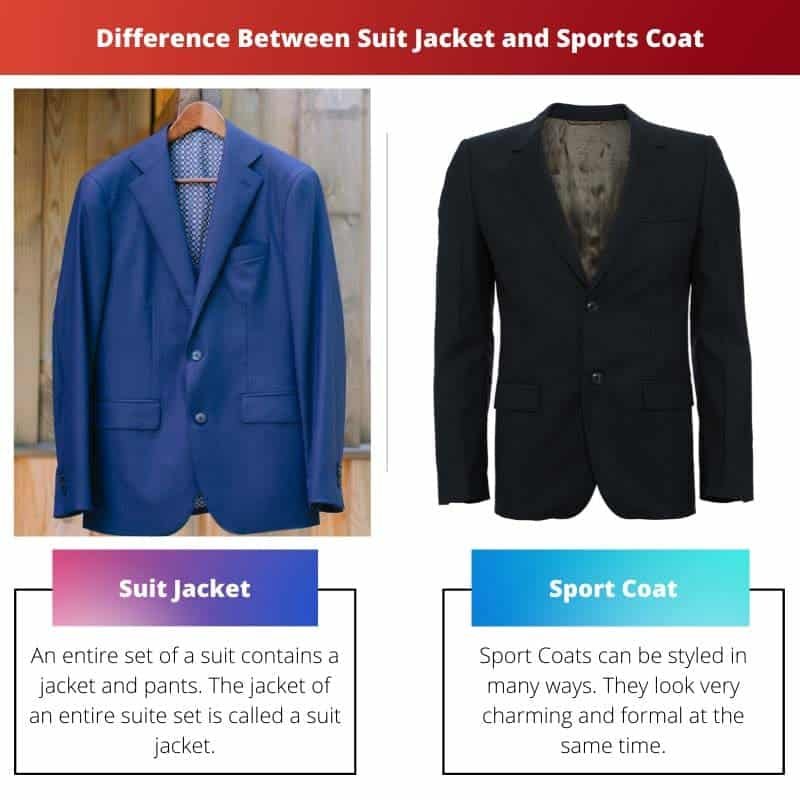Understanding Sports Coats: Features, Differences, and the Perfect Fit

Introduction: The Essential Guide to Sports Coats
The sports coat is a cornerstone of classic men’s style, offering versatility and sophistication that bridges the gap between formal and casual attire. Whether you’re stepping into a modern workplace or heading to a weekend gathering, understanding what defines a sports coat, how it differs from a suit jacket, and how it should fit can help you build a wardrobe with confidence and purpose.

Source: dailyiowan.com
What Is a Sports Coat?
A sports coat (sometimes called a sport coat or sport jacket) is a tailored jacket designed to be worn on its own, without matching trousers. The origins of the sports coat trace back to the 19th century, when gentlemen wore special coats for outdoor sporting activities like hunting or fishing. Today, sports coats are valued for their ability to add polish to an outfit without the formality of a full suit [2] .
Key characteristics of sports coats include:
- Patterns and Textures: Sports coats typically feature distinctive patterns (such as houndstooth, plaid, or checks) or textured fabrics (like tweed or corduroy), making them visually distinct from the smooth, solid fabrics of most suit jackets [3] .
- Fabric Variety: Heavier, more textured fabrics are common, contributing to a less formal appearance and increased durability for everyday wear.
- Versatility: Sports coats are designed to coordinate with a range of trousers, such as chinos, jeans, or dress pants, offering flexibility in styling.
- Casual Roots: While still classic and refined, sports coats are less formal than suit jackets and are suitable for occasions that call for smart, but not strictly business, dress [3] .
How Is a Sports Coat Different from a Suit Jacket?
The distinction between a sports coat and a suit jacket is crucial for building a functional wardrobe. Although they may appear similar at first glance, several factors set them apart:
1. Fabric and Patterns
Suit jackets are almost always made from finer, smooth fabrics such as worsted wool and are typically solid in color or feature subtle patterns. They are designed to be worn as part of a matching set with trousers made from the same material. In contrast, sports coats are made from more robust, textured fabrics and often display bolder patterns. This difference in fabric and design is intentional, signaling the respective formality of each garment [1] .
2. Structure and Fit
Suit jackets are typically more structured, with padding in the shoulders and a defined silhouette aimed at achieving a sleek, professional look. Sports coats are more relaxed and may feature unpadded or natural shoulders, creating a softer profile. Some sports coats are minimally lined or even unlined to enhance comfort and breathability, especially in warmer weather [3] .
3. Usage and Versatility
A suit jacket is always worn with its matching trousers, forming a coordinated suit. Wearing a suit jacket with non-matching pants is generally discouraged, as the difference in fabric texture and color can be noticeable and may look out of place. A sports coat, however, is specifically intended to be worn with non-matching trousers, making it a more versatile addition to your wardrobe [2] .
4. Detailing and Features
Sports coats often have more casual features such as patch pockets, elbow patches, or decorative stitching. These details reinforce the jacket’s laid-back character. Suit jackets, by contrast, usually have more formal elements like jetted or flap pockets and a streamlined finish [3] .
5. Occasions and Dress Codes
Sports coats are ideal for informal business settings, smart-casual events, or social gatherings where a suit would be too formal. They offer a way to look polished while remaining approachable and comfortable. Suit jackets are reserved for formal business environments, ceremonies, or occasions where a professional appearance is essential [4] .
How Should a Sports Coat Fit?
Achieving the right fit is essential for making a sports coat look intentional and stylish. Here are the key aspects to consider, along with practical guidance for finding your best fit:
Shoulders
The shoulder seam should align perfectly with the point where your shoulder ends, without extending past or pulling inward. Natural shoulders are common in sports coats, offering a soft, comfortable shape.
Chest and Body
The jacket should hug your torso with enough room to move comfortably. When buttoned, there should be no pulling or gaping in the front, but the fit should not be so loose that it looks baggy. A good test is to fit a closed fist between your chest and the buttoned jacket; it should feel snug but not tight [1] .

Source: shareyouressays.com
Sleeve Length
The sleeves should end at the wrist bone, allowing about a quarter to half an inch of your shirt cuff to show. Adjusting sleeve length is a common tailoring request and can make a significant difference in the jacket’s overall appearance.
Jacket Length
The bottom of the sports coat should cover your seat or roughly align with the middle of your hand when your arms are at your sides. This classic proportion helps balance your frame and maintains a timeless look.
Practical Steps for Ensuring Proper Fit
1. Try on multiple sizes: Sizing can vary between brands, so always try on several options to find the best fit.
2. Check the shoulder fit first: Shoulders are difficult to alter, so prioritize a good fit here.
3. Consult a tailor: Even the best off-the-rack sports coats may need minor adjustments. A professional tailor can refine the fit in the chest, waist, and sleeves for a custom look and feel.
4. Consider your layering needs: If you plan to wear sweaters or thicker shirts under your sports coat, choose a slightly more relaxed fit.
Example: A Real-World Fitting Scenario
Suppose you’re shopping for your first sports coat. Focus on shoulder fit, as altering the shoulders is rarely successful. Once you find a jacket with shoulders that align well, check the chest and body for comfort, and make sure you can button the coat without strain. If the sleeves or length need minor adjustment, ask your tailor to make those changes. This approach ensures a sharp, flattering look every time.
Alternative Approaches and Considerations
While classic fit guidelines are a safe bet, modern styles offer alternatives. Some brands produce slimmer, more fitted sports coats for a contemporary look, while others embrace relaxed, unstructured designs for maximum comfort. When choosing your style, consider your personal taste, typical occasions, and body shape. Ultimately, the best sports coat is one that makes you feel confident and at ease.
If you’re seeking expert guidance, many menswear retailers provide in-store consultations, virtual fittings, and tailoring services. For personalized advice, you can visit established menswear stores in your area or consult a professional tailor for a wardrobe evaluation. While national chains offer resources online, for a truly customized experience, a local specialist may be your best ally.
Key Takeaways
A sports coat is a versatile, stylish jacket designed for standalone wear, distinguished by its textured fabrics and relaxed features. It differs from a suit jacket in fabric, structure, and intended use. The right fit is achieved by focusing on shoulders, chest, sleeve, and overall length, with tailoring as a valuable tool for refinement. Whether dressing up for a smart-casual event or building a more flexible wardrobe, understanding these differences empowers you to dress with intention and style.
References
- [1] Articles of Style (2024). What’s the Difference Between a Suit Jacket and Sportcoat?
- [2] Tom James (2019). Difference Between a Sport Coat, a Blazer, and a Suit Coat.
- [3] Gentleman’s Gazette (2020). Suit Jackets, Sport Coats, And Blazers: What’s The Difference?
- [4] Jos. A. Bank (2025). Sportcoat vs. Blazer vs. Suit Jacket.






